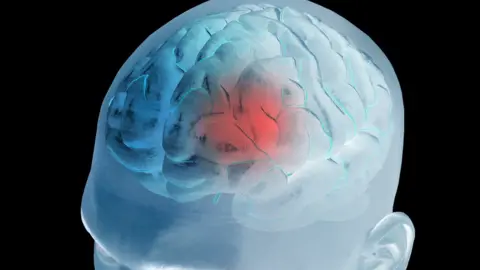Call for wider use of stroke procedure
 Spl
SplA charity working with stroke patients has said a procedure which could transform their treatment should be more widely used in Scotland.
A stroke thrombectomy has the potential to reduce the harm done by a stroke.
The procedure was carried out 13 times in Scotland last year. Chest, Heart and Stroke Scotland (CHSS) said up to 600 patients could have benefitted.
The Scottish government said it was developing a national plan for the procedure.
The only Scottish hospital carrying out stroke thrombectomies is Edinburgh's Western General.
It has never been a routine service but clinicians have operated when they have had capacity to do so.
England has 25 hospitals offering the procedure and Northern Ireland, with a smaller population than Scotland, treats hundreds of patients this way each year.

One of those who did benefit at the Western was Robert Baldock from East Lothian.
He still struggles with speech, but his friend Sharon Quigley was with him when he was rushed to hospital in Edinburgh.
She said his friends had been told to prepare for the worst.
"I was there with some other friends of Robert's," she said, "and we were taken to the family room and we were told the clot busting drugs that they would usually administer, they knew more or less were not going to work."
Speaking alongside Robert, who is now back home, she added: "There was one thing left they could do and that was a thrombectomy.
"However, there was somebody in theatre and it didn't look as if they were going to get you there.
"So we had a very tense 30 minutes but eventually they got you there."

 Getty Images
Getty ImagesHow does a stroke thrombectomy work?
"Thrombectomy is only effective at treating ischaemic strokes caused by a blood clot in a large artery in the brain. It's most effective when started as soon as possible after a stroke.
"The procedure involves inserting a catheter into an artery, often in the groin. A small device is passed through the catheter into the artery in the brain.
The blood clot can then be removed using the device, or through suction. The procedure can be carried out under local or general anaesthetic."
Source: NHS UK website

Jane Claire Judson, the chief executive of CHSS, said they will press for faster action to make the treatment more widely available.
She said: "We understand the Scottish government is setting up a group to look at a strategy around the delivery of stroke thrombectomy.
"However this could take a longer time than necessary to get it up and running.
"While some people are considering and deliberating an evidence-based procedure, there are people on the ground that are suffering as a result of that and that's not something we think is acceptable in Scotland."
NHS Scotland has said it fully accepts the benefits of carrying out thrombectomies in appropriate cases.
Prof Jason Leitch, national clinical director of NHS Scotland, said: "We fully support the development of thrombectomy services, which we believe can significantly improve outcomes and quality of life for people who have had an ischaemic stroke by avoiding or reducing the level of disability.
"Work is under way to develop a national plan that will meet our expectations for high quality, safe, effective and person centred care across Scotland."
